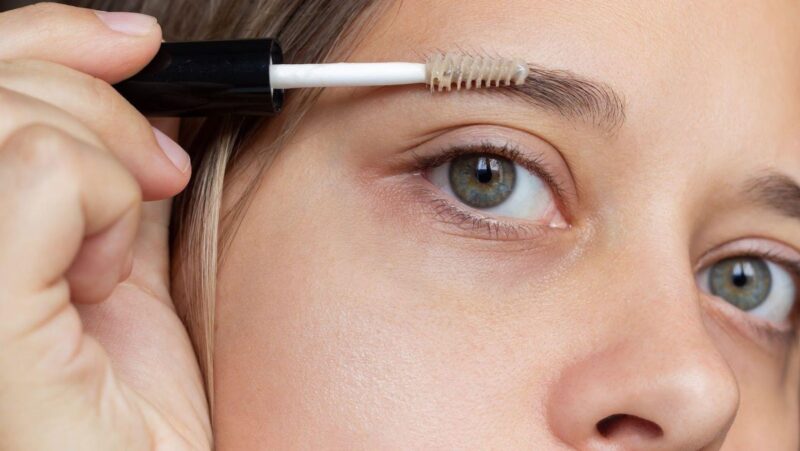
Staring at endless rows of skincare products, feeling confused about which ones actually work for your skin? You’re not the first person to feel lost in the sea of serums, moisturizers, and treatments, each promising miracle results. The real problem isn’t a lack of products – it’s knowing exactly what your skin needs. Using the wrong products can lead to breakouts, irritation, or whether your money is on items that just sit in your bathroom cabinet.
The secret to great skin starts with understanding your unique skin type. Once you crack this code, choosing effective products becomes dramatically simpler and your skincare routine delivers real results.
In this guide, we’ll cut through the marketing hype and show you exactly how to identify your skin type, select products that actually work, and build a routine that gives you healthier, clearer skin. Say goodbye to trial and error – let’s get your skincare sorted.
Comprehensive Skincare Guide by Skin Type
|
Aspect |
Dry Skin |
Oily Skin |
Combination Skin |
Normal Skin |
|
Key Characteristics |
|
|
|
|
|
Recommended Cleanser |
|
|
|
|
|
Best Moisturizer Type |
|
|
|
|
|
Key Ingredients to Look For |
|
|
|
|
|
Ingredients to Avoid |
|
|
|
|
|
Weekly Treatments |
|
|
|
|
|
Special Care Tips |
|
|
|
|
|
Warning Signs |
|
|
|
|
How to Determine Your Skin Type
Start with a bare face. Wash with a gentle cleanser and wait 30 minutes. Notice how your skin feels and looks.
Here’s what different characteristics reveal:
Tight, flaky patches signal dry skin. Your skin lacks natural oils and needs extra hydration. People with dry skin often experience redness and sensitivity.
Shine across your T-zone points to oily skin. Large, visible pores and frequent breakouts commonly occur. Your skin produces excess sebum throughout the day.
A mix of both? That’s combination skin. Most people notice an oily T-zone but dry cheeks. Different areas need different care approaches.
Normal skin feels balanced – neither too dry nor too oily. Lucky you! Focus on maintaining this equilibrium.
Essential Products for Each Skin Type
Dry Skin Heroes
Look for creamy, non-foaming cleansers with moisturizing ingredients like glycerin or hyaluronic acid. Skip harsh exfoliants that strip moisture.
Rich moisturizers containing ceramides, shea butter, or squalane help repair your skin barrier. Apply while skin remains slightly damp to lock in hydration.
Add facial oils as the last step of your nighttime routine. Jojoba, argan, and rosehip oils closely match your skin’s natural oils.
Oily Skin Solutions
Choose gel-based or foaming cleansers with salicylic acid or benzoyl peroxide. These ingredients help control oil and prevent breakouts.
Light, oil-free moisturizers provide necessary hydration without heaviness. Look for “non-comedogenic” on labels – this means it won’t clog pores.
Clay masks used 1-2 times weekly help absorb excess oil and clear pores. Green clay works well for most oily skin types.
Combination Skin Strategy
Use gentle, pH-balanced cleansers that remove oil without over-drying. Consider double cleansing at night – oil cleanser followed by water-based cleanser.
Zone-specific treatment works best. Apply lighter products on oily areas and richer ones on dry patches. Gel-cream hybrids often work well overall.
Weekly masks can target different concerns. Use clay on oily areas and hydrating masks on dry zones.
Normal Skin Maintenance
Maintain balance with mild cleansers and lightweight, hydrating products. Focus on prevention rather than correction.
Incorporate antioxidants like vitamin C to protect skin health. Regular gentle exfoliation keeps skin fresh without disrupting its natural balance.
If you are seeking expert guidance for your unique skin concerns, consulting a dermatologist can help you develop a personalized skincare routine tailored to your specific skin type and needs.
Building Your Skincare Routine
Morning Basics
- Cleanse gently
- Apply active ingredients (vitamin C, niacinamide)
- Moisturize
- Sunscreen (absolutely essential for all skin types)
Evening Essentials
- Double cleanse if wearing makeup
- Treatment products (retinol, acids, serums)
- Moisturizer
- Facial oil (if needed)
Common Mistakes to Avoid
Over-exfoliating damages your skin barrier, leading to sensitivity and irritation. Limit physical scrubs to once weekly.
Skipping sunscreen allows UV damage to undo all your skincare efforts. Make it a daily habit, rain or shine.
Using too many active ingredients at once can irritate skin. Introduce new products gradually, waiting at least a week between additions.
When to Seek Professional Help
Some skin concerns need expert attention. See a dermatologist if you experience:
- Persistent acne that doesn’t respond to over-the-counter products
- Severe dryness or flaking that doesn’t improve with moisturizer
- Rashes, extreme redness, or signs of allergic reactions
- Sudden changes in moles or skin texture
Seasonal Skin Adjustments
Skin needs to change with the seasons. Winter often requires richer moisturizers while summer calls for lighter formulas. Pay attention to how your skin responds and adjust accordingly.
Keep some backup products ready for seasonal transitions. This helps you adapt quickly when skin needs change.
The Role of Diet and Lifestyle
Great skin starts from within. Stay hydrated, eat plenty of fruits and vegetables, and get adequate sleep. These basics support your skincare routine’s effectiveness.
Manage stress through exercise and relaxation techniques – high stress often shows up on your skin first.
Wrapping Up
Understanding your skin type revolutionizes your skincare journey. Start with the basics, pay attention to how your skin responds, and adjust as needed. Remember that significant skin changes take time – give new routines at least 4-6 weeks to show results.
Keep a simple log of products used and any reactions. This information proves invaluable for fine-tuning your routine and avoiding problem ingredients in the future.
With patience and the right products, achieving healthy, balanced skin becomes much more manageable. Focus on consistency rather than constantly chasing new product trends.














